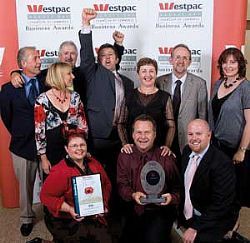TIGHTENING THE BELT
Tough economic times demand sensible cost reduction and management strategies. Ruth Le Pla engages expert opinion to uncover some valuable cost-cutting lessons for all business owners.
|
I once worked in a publishing company that told us to stop using so much typewriter ribbon. You can tell this was a long time ago. The boss was on an economy drive and this was his best shot at it. For starters, if marketing or advertising is vital for your survival, why would you cut them out?
"Too often SME owners focus on just cost cutting as the solution, when in fact it is just one part of the overall plan that needs to be in place if the business is to survive and thrive during a downturn." Be prepared to think laterally. Atkinson says he’s knows of companies that have suggested to staff they take a pay cut and work four days a week instead of five. The key link between successful companies is planning, identifying the costs to cut and understanding what drives value in their business, he says. "Another key factor is proactive communication with their bank and the IRD if there are going to be issues with repayment. "Often by reviewing costs, a company may not reduce their spend but improve their terms with a supplier. |
"This often leads to discussions around a repayment plan or consolidating debt." Tips on cost management In his company paper, Denis Stevens provides a series of practical tips. "Never assume you know the market as well as your suppliers," he advises, "and never assume that they’re providing you the best deal possible. Do you know what your competitors are paying for the same products?" Stevens also suggests calling in a negotiator. "Strong relationships are fine but never allow the person in daily contact with a supplier to negotiate price. "Use the good cop/bad cop approach by calling in someone else, so that emotion is not involved in the process. This allows your day-to-day relationship to remain unaffected." If suppliers want to raise their prices, get them to explain why. "Don’t accept a price increase without challenge and without a review of your alternatives," says Stevens. "Any increase must be supported by proof of supply chain cost increases, beyond the control of the supplier, and not just a blow-out of the supplier’s internal operating expenses." Kevin McCaffrey spent 17 years with PricewaterhouseCoopers before shifting gear to take up directorships on two small companies. At the international consultancy he learnt the value of cold, hard, cash. "Now, I keep saying to SMEs, ‘profit is an opinion: cash is a fact’." For the past couple of years, says McCaffrey, most SMEs have enjoyed good cash-flow and sales. "So they’ve probably got a bit slack at looking out 90 and 120 days: forecasting sales and cash. "But those are the only two things that are going to keep the blood flowing. "It’s been easy to sell and people have paid their bills. Well, it’s going to get a lot harder to sell now and people aren’t going to pay on time. "Poor cash-flow kills an SME: the arteries open, the blood runs out and they die." He urges business owners experiencing a serious sales slowdown for the first time in years to focus their efforts on forecasting. "Don’t lose it in a spreadsheet. You can do it on a piece of butcher’s paper on the wall. The danger of doing it in models and complex spreadsheets is you are the only one looking at the screen. If you write it on the wall other people might see it. He talks about one client company that ran into a cash deficit. "That’s typical. It’s a consulting business and it was January so cash was low." McCaffrey wanted to know how wide and deep that deficit was. "What’s the shape of it? Was it a ‘V’ or a ‘U’? "If it’s a ‘V’, you go straight down and then straight up again. The banks look at that and say ‘in 30 or 60 days you’ll be cash positive’. "But if it looks like a bathtub or [the line] goes down and runs along the bottom – the ‘U’ shape – you’re not going to survive." Once a manager has an accurate forecast, they need to talk it through with two key sets of people: the ones who make the money (their own sales and operations staff) and their bankers and investors. Sadly, says McCaffrey, most businesses are still run on a monthly accounting basis which provides more information on what has already happened, when the useful stuff is the cash forecasts looking forward. "That’s a key thing: because if you’ve got a clear idea of your forecast, then they can create a set of priorities. "And that gets to cost cutting. If you’ve got clear priorities, you’ve got a framework for cost reduction." A matter of priorities In McCaffrey’s experience, business people too often cut the easy variable costs instead of getting the priorities right and sometimes making some hard decisions. "So, do you cut labour costs? Well, how important is it to have labour drive sales or deliver customer service in your business? "Unfortunately, people cut the easy and the obvious. They cut training or marketing or travel. They are all legitimate costs and all things that should be managed." "I’ve seen companies cut travel costs, which meant the reps couldn’t travel very far." He’s also a firm believer in what he calls ‘the positive no’. "People have a conversation about what they’re going to do over the next 12 months but they lack someone saying, ‘no, we’re not going to do that’ and absolutely stopping stuff. "They tend to cut a bit out of everything. If you are really serious about cost reduction, you stop doing stuff. "I used to say to people, ‘you’re better to cut a limb off: that way you won’t bleed to death. If I give you a 1000 cuts you might’. "So for cost reduction, get your plan right, your priorities right and cut something off. "It’s ‘the positive no’. We are saying ‘no’ and the reason is positive. It’s the right thing to do." In the end, the same spirit of entrepreneurship that kick-started a company may kick in to save it. "When these people were setting up these companies they made some really ambitious calls," says McCaffrey. "Now they’ve got to have the inspiration to lead that company through that U curve: down and up the other side. "They’ve got to say, ‘here’s the direction. Here are the priorities. This is what we’re going to do. This is what I personally will do’." Ruth Le Pla is an Auckland-based freelance writer. Email [email protected]
|




